Seeking a policy response to the robot takeover
This article by Alice M. Rivlin for Bloomberg may be of interest to subscribers. Here is a section:
If driverless deliveries prove faster, cheaper, safer, and more accurate, they would likely be adopted quickly and affect all parts of the country. Truck driving is much less concentrated in particular areas than, say, coal mining or steel making.
In 2016, there were 1.7 million heavy and tractor-trailer truck drivers, with a median annual wage of $43,590; 859 hundred thousand light-truck and delivery workers, who earned $34,700; and 426 hundred thousand driver/sales workers, who earned $28,449. So a rough estimate would be that driverless deliveries would put at least 2.5 million drivers out of work, not counting drivers’ helpers and a substantial number of workers in truck stops and roadside services patronized by truckers. Truck drivers drink a lot of coffee.
Like many lost manufacturing jobs, truck driving requires skill, some special training, hard work, and fortitude, but not much formal education. If you did not go beyond high school, but are a reliable, safe driver—especially if you are willing to work the demanding schedules of long-haul truckers—you can support a family and have decent benefits by driving a truck.
The transition to driverless deliveries would also create some new jobs, many of them technical jobs involving software development and programming that would command relatively high wages. Vehicle maintenance jobs would still be necessary, and would likely require enhanced electronic skills with higher pay than current truck maintenance jobs. Expanded demand for the cheaper delivered products would likely create additional jobs in the transportation sector. It is impossible to predict the ultimate effects of any major technological change, but in the short run it is a good bet that a lot of former drivers would be looking for work and finding their skills and experience ill-suited to available jobs at comparable wages.
The one question I get wherever I go to talk is what am I going to do when the robots take my job? It’s a big question but over the last year it has really moved into the public consciousness. The prospect of machines driving down our roads with no human behind the wheel has lent a sense of reality to the debate that was not present in years past.
The problem is there is no single answer to the question. Some jobs will disappear and the people who made a reasonable living performing those tasks with limited additional skills will become the future long-term unemployed.
As automation trends higher the need for the massive supply chains associated with globalisation where suppliers are in disparate parts of the world but ship to somewhere like China for manufacturing then out again for sale is less compelling if labour costs fall out of the equation. One of the next largest costs of manufacturing is energy; as both electricity and transportation.
Near-shore-just-in-time-manufacturing is an up and coming future business model which will be viable with highly automated factories and local populations of a sufficient size to provide demand. That suggests the USA, Europe, Japan, China, India and Indonesia will be among the greatest beneficiaries of this kind of trend while legacy manufacturing operations will come under increasing pressure.
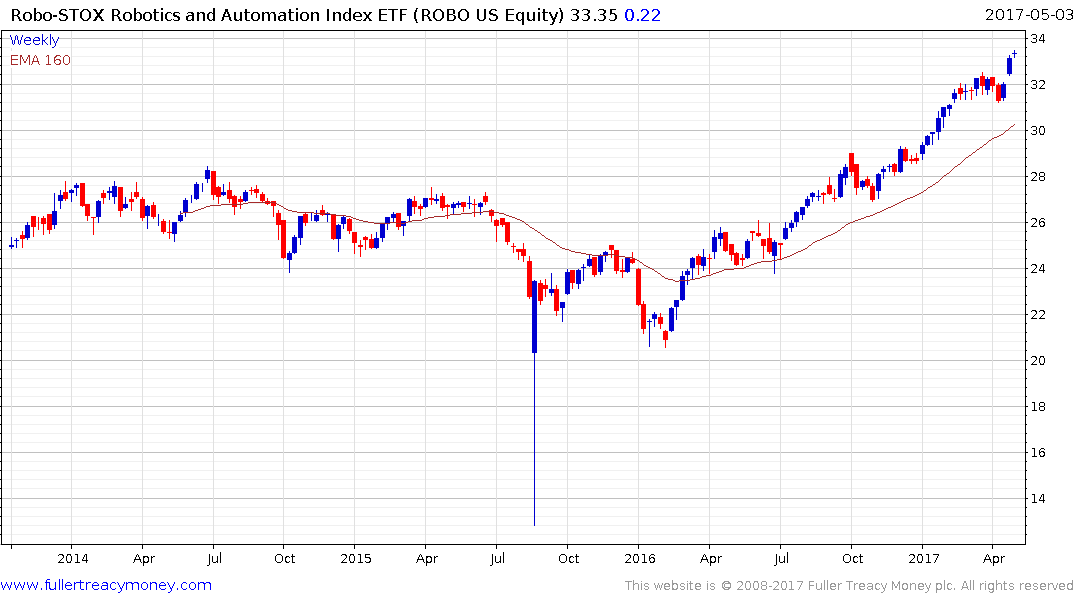
The ROBO Global Robotics and Automation ETF has held a progression of higher reaction lows since early 2016.
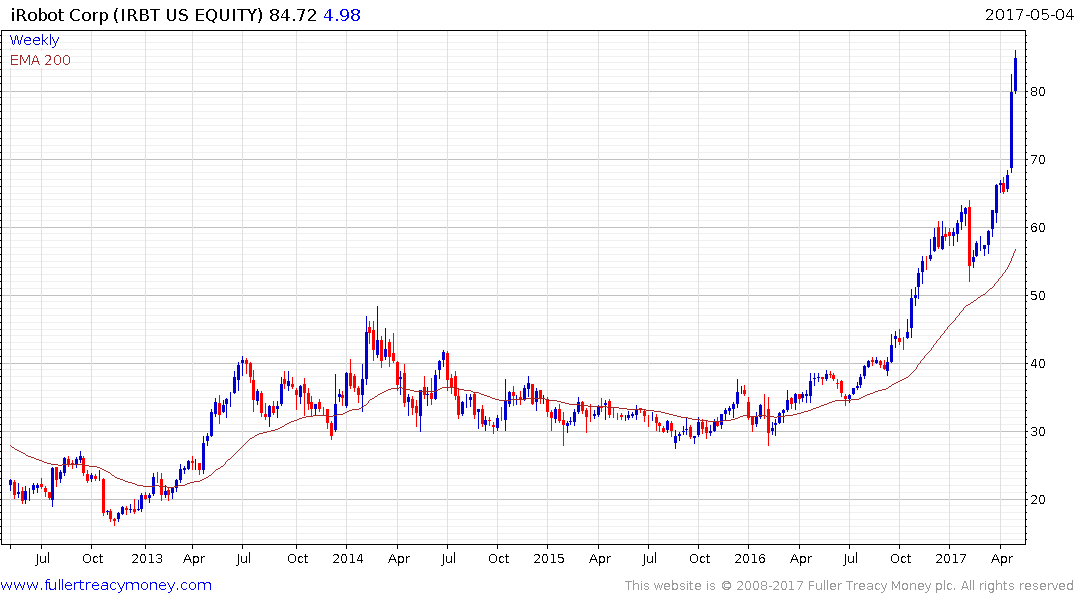
iRobot accelerated higher in April on strong earnings and some consolidation is looking increasingly likely. However a clear downward dynamic will be required to check momentum.
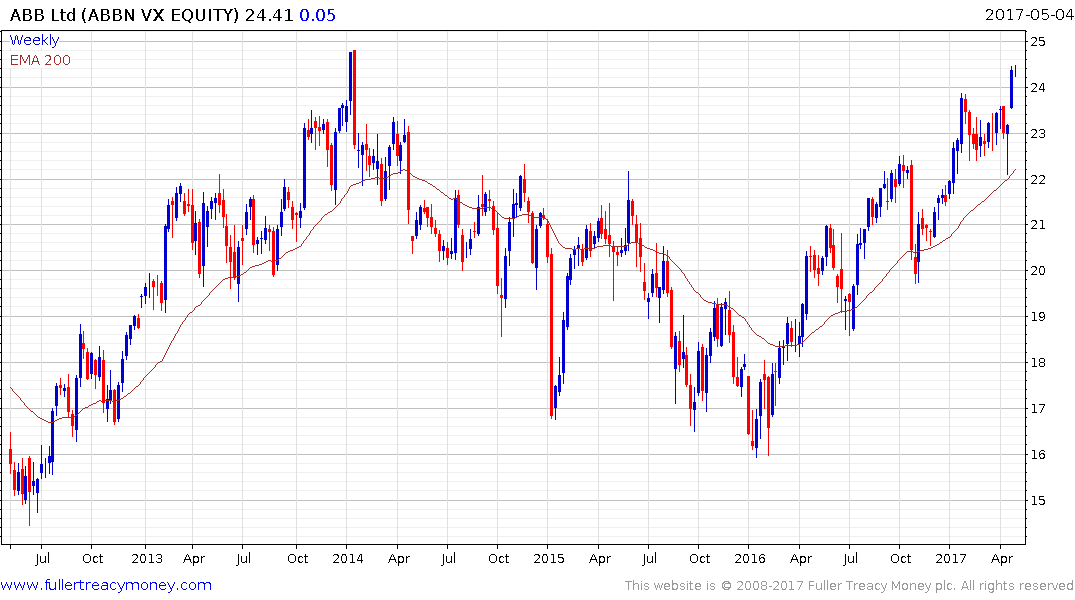
ABB broke out to new recovery highs at the beginning of the year and bounced impressively from the region of the trend mean in April.
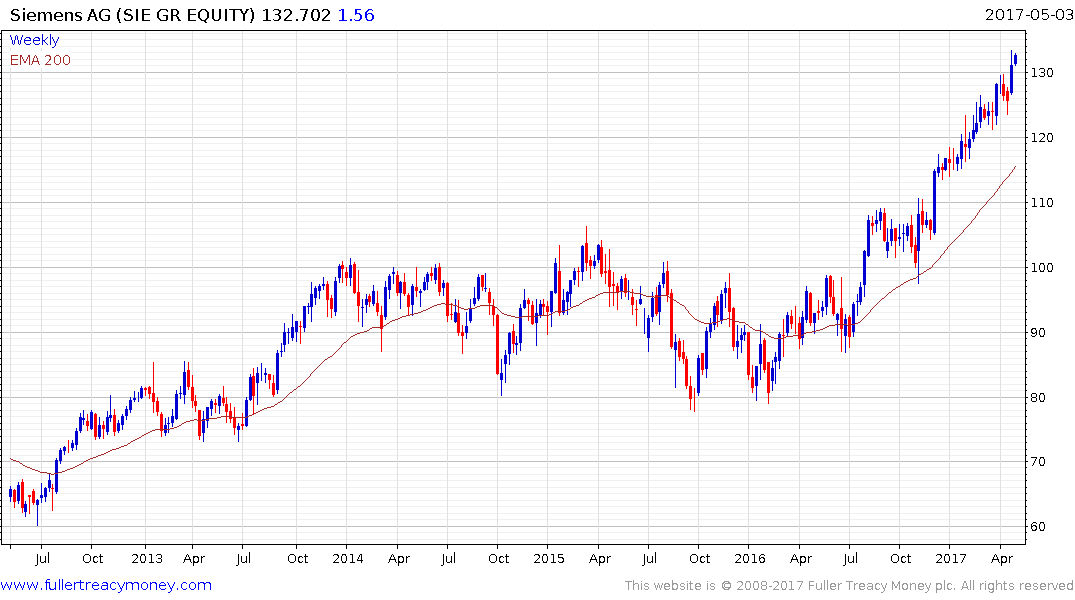
Siemens broke successfully above €100 in December to complete a 17-year range and continues to extend the breakout.
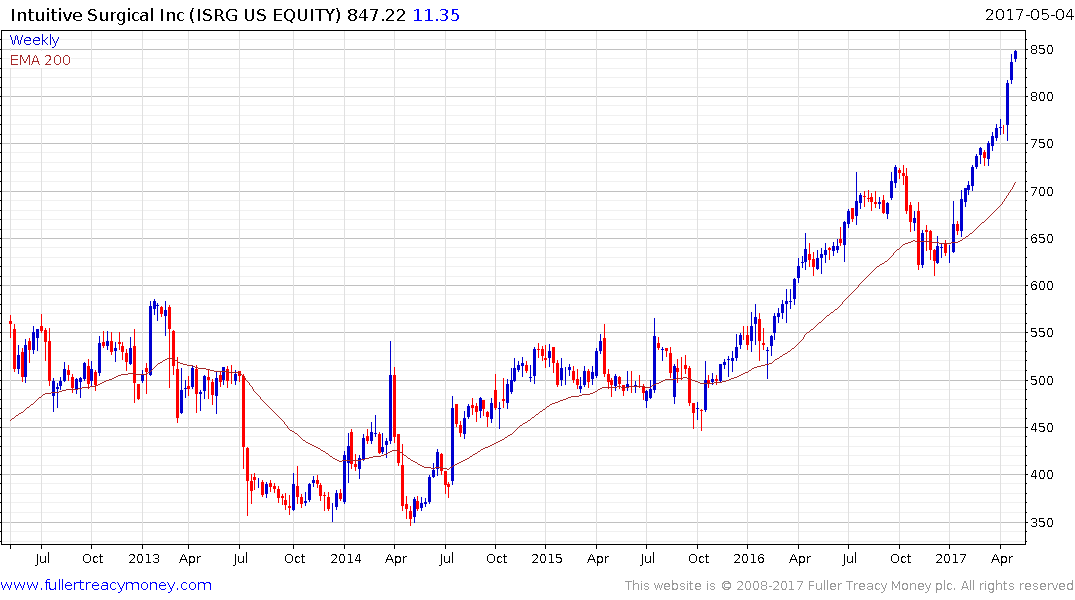
Intuitive Surgical broke out in early 2016 and is now somewhat overextended relative to the trend mean. However a sustained move below the trend mean would be required to question medium-term scope for additional upside.
The only way to avoid mass unemployment of previously productive members of society is to invest in technical education of displaced workers and to make that as cost effective as possible. Massive Open Online Courses (MOOCs) are a step in the right direction but the online education sector has a lot further to grow. Wider provision of recognised trade related qualifications at an affordable price will be key to that development I believe.
Back to top

